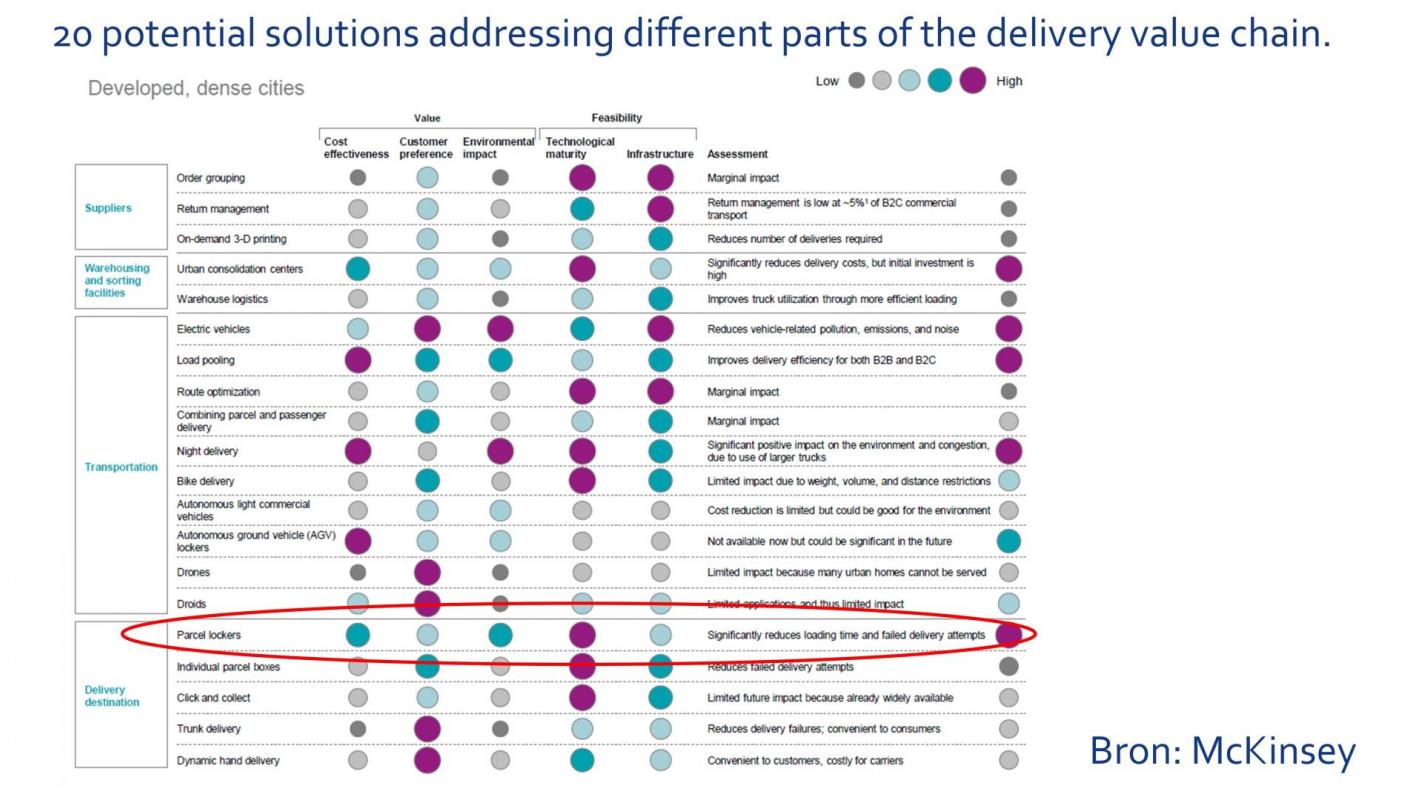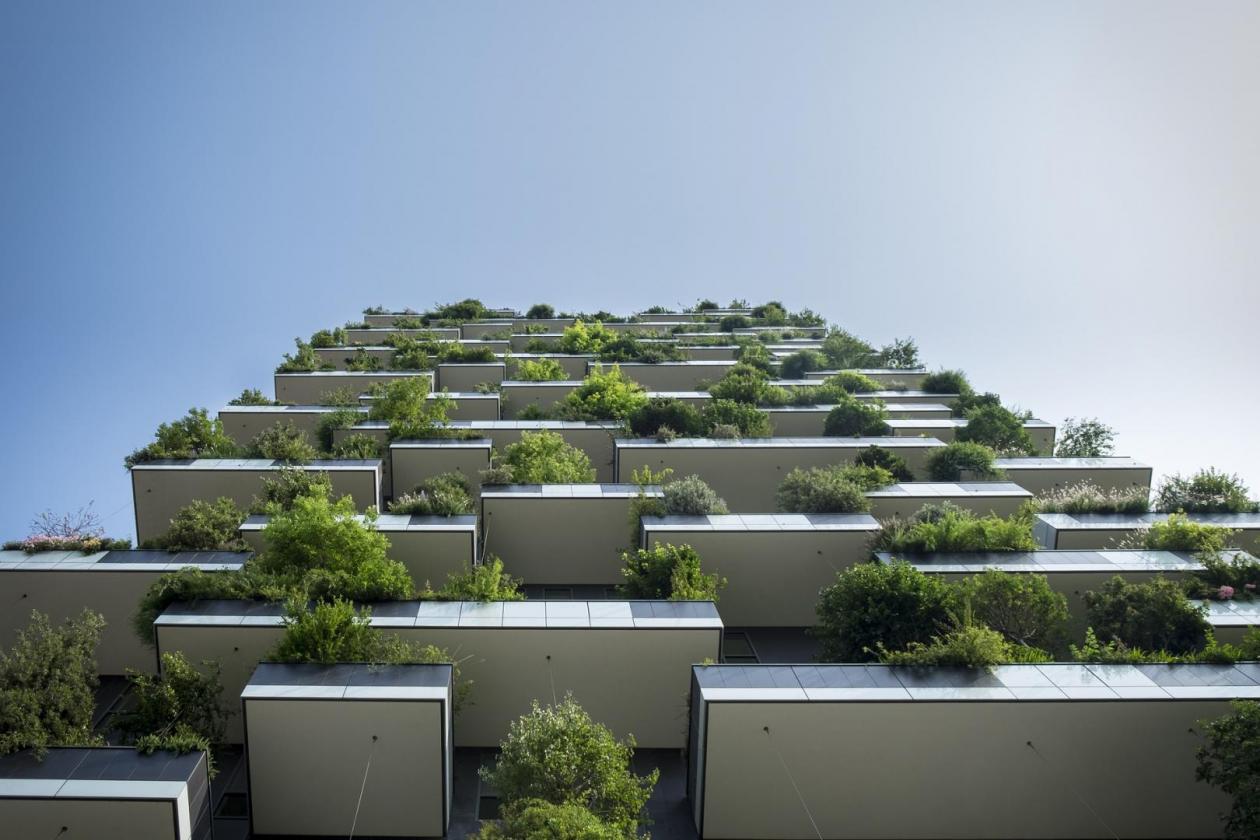Parcel machines and sustainability. How is that actually?
Parcel delivery in the Netherlands is growing enormously under the influence of growing e-commerce. While 312 million parcels were delivered in the Netherlands in 2015, that number rose in 2020 to (an estimated) more than 600 million parcels. In the last months of 2020, the number of parcels delivered rose to a staggering 1.7 million per day at PostNL alone! (Source: ACM and PostNL.) And the expectations are that the end of that growth is not yet in sight and that it will continue to increase at 10-15% per year.
Home delivery offers consumers a lot of convenience, but there is also a downside to this luxury due to the rapid growth. The streets are becoming increasingly busy with delivery services and that, in addition to increasing irritation and inconveniences, is accompanied by the necessary emissions and extra traffic pressure. Although electric transport and freight bundling make an important contribution to making The Last Mile more sustainable, municipalities, developers and building owners are increasingly looking for additional solutions.
Sustainable construction is more than saving energy
It should no longer come as a surprise that more and more sustainable construction is taking place. Respect for people and the environment are paramount in the development of buildings. It goes without saying that, for example, responsible use of materials and water, a healthy indoor environment (ventilation) and energy-saving measures are taken into account. But in order to make (and keep) a building, street or neighborhood future-proof and pleasant to live in, facilities for parcel delivery are also increasingly being looked into. Given the future scenario of growing parcel volumes, parcel machines are a very valuable addition, provided they are located in places where a lot of parcel traffic converges, such as residential complexes, apartment buildings or business multi-tenant buildings.
Less traffic movements
Parcel machines ensure that the first delivery attempt is almost always successful. This means that no additional attempts need to be made by the delivery person. If a delivery does not work now, there is a good chance that you can still pick up the package at a parcel point. And picking it up there also results in extra movements, but then by the recipient. And the more parcel services, the more intensively this phenomenon occurs.
Various studies have been carried out into the advantage that a parcel machine provides when these factors are calculated. Although the design of those studies and the factors weighed in them differ, the results without exception argue in favor of the wider use of collection points such as the parcel machine.
Sustainability gains quantified
One of the studies showed that when 50% of the parcels in a round could be delivered to a machine or central collection point, the number of kilometers dropped sharply (-55%). McKinsey has even calculated that the emission reduction in densely populated urban areas with parcel delivery machines can drop by up to 70%, provided there is a sufficient network coverage. TU Delft reports a 2/3 reduction in emissions (including trips from recipients to a machine). "When parcel machines are White Label and all parcel services can deliver to it, the emission reductions of up to 40% are feasible." (Source: MDPI)
Consumer is willing to pay
A reassurance for building owners who are considering installing a parcel machine is that most consumers appear to be quite willing to pay a little extra for a more sustainable parcel delivery (Source: D&B). In complexes (both residential and business), where the monthly rental of a machine can be divided in the service costs over the number of tenants or owners, the amount can be limited to just a few euros per month. This is acceptable to many of the consumers surveyed, especially if they have already experienced the necessary misery and irritation that parcel deliveries in complexes can entail. Research by TU Delft shows that consumers rate the use of parcel machines with an average of 8.8. A location near the home address, 24/7 availability and user-friendliness turned out to be the most important characteristics for this high score of the parcel machine.
The CiPiObox
CiPiO wants to facilitate the growing parcel flow, make home delivery more comfortable and at the same time contribute to more sustainable city logistics. That is why we place parcel machines in apartment and business complexes. Our White Label machines make it possible for all delivery services to deliver easily. More information? Please do not hesitate to contact us.
Consulted studies
McKinsey (2017)
TU Delft (2018)
Dijksterhuis & van Baaren (feb. 2021)
Topsector Logistiek (march 2021)
MDPI (jan. 2021)


